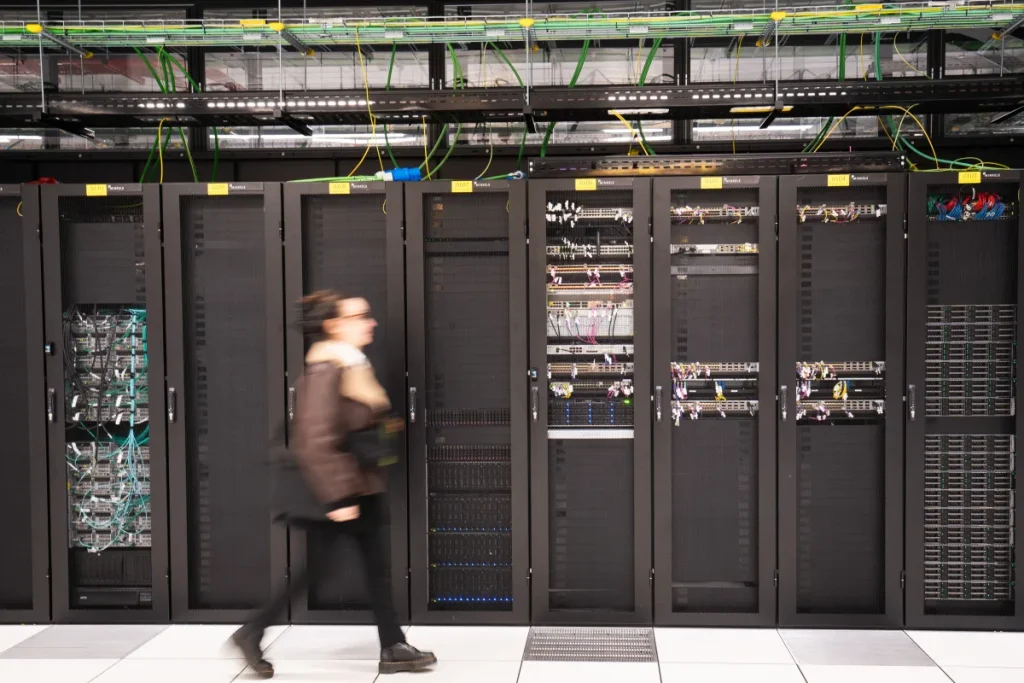Rising energy costs threaten AI and data center operations.

Image Credits:Nathan Laine / Bloomberg / Getty Images
Growing Concerns Over Data Centers and Energy Costs
As tech giants unveil ambitious plans for new data centers, consumer apprehension is palpable regarding the potential impact of these developments on electricity costs. A recent survey commissioned by solar energy provider Sunrun revealed that a striking 80% of consumers are worried about how data centers will influence their utility bills.
The Current State of Electricity Demand
Consumers’ concerns are well-founded. The U.S. Energy Information Administration (EIA) has reported that electricity demand remained relatively stable for over a decade, but recent years have seen significant increases in consumption from commercial sectors, notably data centers and industrial users. Over the past five years, demand in these sectors has surged by 2.6% and 2.1%, respectively, while residential consumption has merely increased by 0.7% annually.
Currently, data centers account for approximately 4% of the total electricity generated in the United States, more than double their share from 2018. Forecasts by the Lawrence Berkeley National Laboratory suggest that this could rise to between 6.7% and 12% by 2028, shedding light on a worrying trend for consumers.
Renewable Energy’s Role in Meeting Demand
Despite rising demand, electricity generation has managed to keep pace thanks to an influx of new capacity from renewable sources like solar and wind, alongside grid-scale battery storage. Big tech companies are particularly keen on solar energy due to its low cost, modularity, and rapid deployment. Notably, solar farms can begin supplying power to data centers even before they are fully operational, with new projects typically taking just about 18 months to complete.
The EIA anticipates that renewables will dominate new generating capacity for at least the next year. However, this trend may face challenges following anticipated Republican efforts to repeal key provisions of the Inflation Reduction Act, which could stifle growth in the renewables sector long-term.
Natural Gas: A Shaky Alternative
Natural gas, another favored energy source for data centers, is not meeting current demands either. Although production has been increasing, most of the newly available supplies have been directed towards exports rather than the domestic market. Between 2019 and 2024, the consumption of natural gas by electricity generators surged by 20%, while exports skyrocketed by 140%.
Compounding the issue, new natural gas power plants take around four years to construct, according to the International Energy Agency. A backlog in turbine production for gas-fired plants has exacerbated the situation. Manufacturers are currently providing delivery estimates stretching up to seven years into the future, making it clear that any immediate increase in natural gas capacity is unlikely.
The Role of AI in the Energy Landscape
While AI and data centers are often highlighted as pivotal players in growing electricity demand, it’s essential to note that industrial users are contributing to this surge as well. However, AI appears to be at the forefront of public concern. A Pew survey indicates that public sentiment is shifting; more individuals express worries about AI technology than excitement over its potential benefits. Many workplaces are utilizing AI primarily as a tool for reducing workforce size rather than enhancing productivity, further fueling public skepticism.
The Backlash Against Rising Energy Prices
With energy prices on the rise, it’s clear that a backlash may be forming against the burgeoning presence of data centers and AI in the market. Many consumers link these developments to increased utility costs, heightening their frustration. The convergence of higher energy demands and stagnant renewable growth presents a complex challenge that could have lasting implications for both consumers and tech companies.
Conclusion: Navigating the Future of Energy and Technology
As the tech industry continues to evolve, balancing the energy needs of data centers with sustainable generation methods will be crucial. Companies must address consumer concerns about rising electricity costs while ensuring that their operations remain financially viable.
Given the prevailing anxieties surrounding AI and energy consumption, tech firms have an opportunity to engage with consumers transparently and responsibly. By investing in renewable energy solutions and demonstrating their commitment to sustainability, these companies can potentially alleviate public concerns and pave the way for a more favorable energy landscape in the future.
In the coming years, navigating this intersection of technology and energy will require collaboration among industry stakeholders, government bodies, and consumers alike to ensure a balanced approach that serves everyone’s needs.
Thanks for reading. Please let us know your thoughts and ideas in the comment section down below.
Source link
#Rising #energy #prices #put #data #centers #crosshairs





